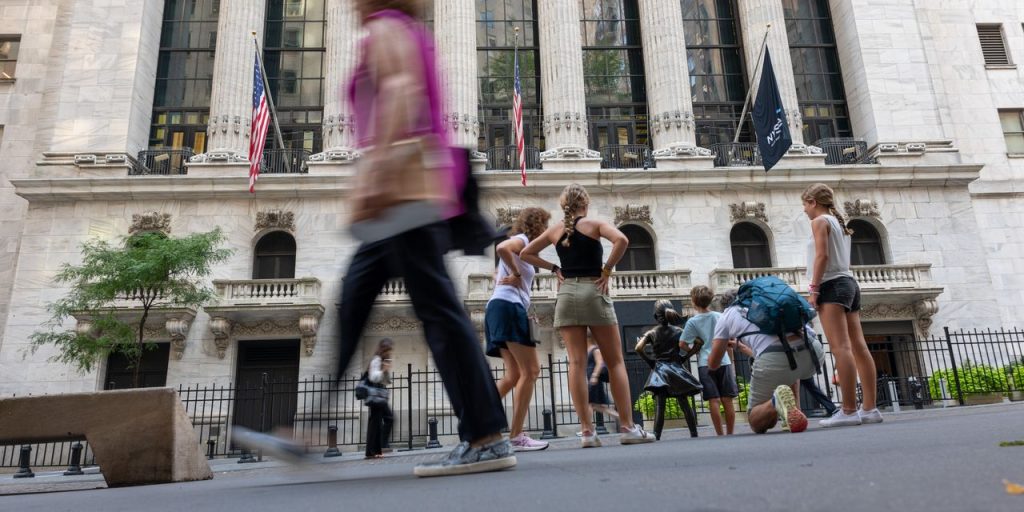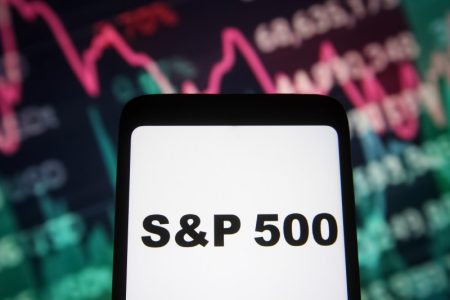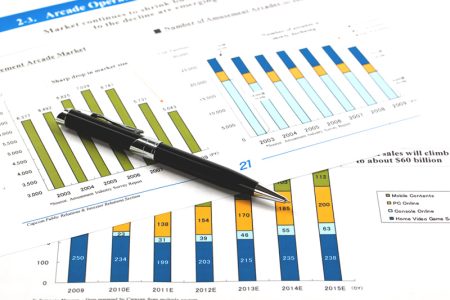U.S. stocks finished lower on Wednesday with the Nasdaq Composite suffering three consecutive sessions of losses as investors remained wary of higher Treasury yields after a stronger-than-estimated reading on the services industry for August, while rising oil prices revived concerns over inflation and more interest-rate hikes by the Federal Reserve.
How stocks traded
-
The Dow Jones Industrial Average
DJIA
fell 198.78 points, or 0.6% to end at 34,443.19 -
The S&P 500
SPX
dipped 31.35 points, or 0.7% to finish at 4,465.48 -
The Nasdaq Composite
COMP
dropped 148.48 points, or 1.1%, ending at 13,872.47. It was the worst daily performance for the technology-heavy index since August 24, according to FactSet data.
On Tuesday, the Dow, S&P 500 and Nasdaq Composite all ended lower as U.S. investors returned from a three-day holiday weekend.
What drove markets
Stocks fell as benchmark U.S. Treasury yields rose further after the release of the Institute for Supply Management’s service sector activity index for August, while U.S. benchmark oil futures scored their longest streak of daily gains in over four years.
An ISM barometer of U.S. business conditions at service companies such as restaurants and hotels strengthened to 54.5% in August from 52.7% in the prior month. This is the highest level since February and the eighth straight reading above the 50% threshold that indicates expansion in the economy. Economists polled by the Wall Street Journal had expected the index to slip to 52.5%.
“This is the kind of inflation data the Fed is fighting and it’s fighting inflation within the services component of the economy which accounts for two-thirds of the U.S. GDP,” said Matt Stucky, senior portfolio manager of equities at Northwestern Mutual Wealth Management.
The U.S. service sector was in a “pretty resilient situation” and it “speaks to the resiliency of what economic performance has been in 2023,” Stucky told MarketWatch in a phone interview.
See: How one big stock-market investor is positioning for a decade of inflation
The price of Brent crude
BRN00,
on Tuesday rose above $90 a barrel for the first time since November, after Saudi Arabia and Russia said Tuesday they would extend production cuts until the end of the year. November Brent crude
BRNX23,
continued to jump on Wednesday, settling at $90.60 per barrel on ICE Futures Europe. West Texas Intermediate crude for October delivery
CLV23,
finished at $87.54 a barrel on the New York Mercantile Exchange. Prices settled higher for a 9th session in a row for the longest longest daily streak of gains since January 2019, according to Dow Jones Market Data.
“[W]hile oil bulls are dancing in the street, the notable price uptick could prove challenging for central banks and financial markets, which were embellishing the current lower inflation groove…if bonds are selling off mainly thanks to higher inflation expectations, that truly will be bad news for markets,” said Stephen Innes, managing partner at SPI Asset Management.
See: Stock-market investors just got reminded that the inflation fight isn’t over
The increase in energy prices raised concerns that the decline in U.S. inflation this year will stall, forcing central banks to keep borrowing costs higher for longer. The 10-year Treasury yield
BX:TMUBMUSD10Y,
which at one point last Friday was trading below 4.10%, settled at 4.289% Wednesday. The yield on the policy sensitive 2-year Treasury note
BX:TMUBMUSD02Y
jumped 5.6 basis points to 5.022% from 4.966% on Tuesday.
In other economic data, the U.S. international trade deficit widened 2% in July to $65 billion, the Commerce Department said Wednesday. Economists surveyed by The Wall Street Journal had predicted the deficit would widen to a seasonally adjusted $68 billion from the initial estimate of a deficit of $65.5 billion in June. The trade gap in June was revised down to $63.7 billion.
See: Last burst of leisure spending leads to modest U.S. growth in summer months, Fed’s Beige Book says
The Federal Reserve’s latest Beige Book shows the economic growth was modest in July and August as consumer spending on tourism was stronger than expected, surging during what most considered “the last stage of pent-up demand for leisure travel from the pandemic era.”
However, other retail spending continued to slow, especially on non-essential items, the survey said. Some Districts suggest consumers may have exhausted their savings and are relying more on borrowing to support spending.
Companies in focus
-
Technology stocks underperformed on Wednesday. Shares of Nvidia Corp.
NVDA,
-1.45%
fell 3.1%, while Apple Inc.
AAPL,
+0.35%
was down 3.6% and Tesla Inc.
TSLA,
-1.19%
declined 1.8%. -
AMC Entertainment Holdings Inc.
AMC,
-11.58%
finished 36.8% lower on Wednesday toward the lowest price seen since January 2021 after the movie theater operator disclosed an equity distribution agreement in which the company could sell up to 40 million common shares. -
Core & Main Inc.
CNM,
-0.64%
declined 6.6% after the provider of water, storm drainage and fire protection products and services to contractors and municipalities missed fiscal second-quarter profit expectations and trimmed its full-year sales growth outlook, citing “pockets of weakness” in new projects. -
Zscaler Inc.
ZS,
-0.16%
ended 2.7% lower on Wednesday after the cybersecurity company’s strong quarter and outlook topped Wall Street’s expectations but executives said deals were taking longer to close in the current business environment.
Jamie Chisholm contributed
Read the full article here














